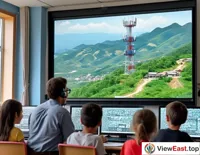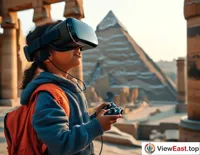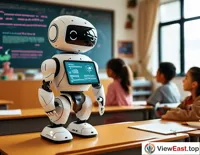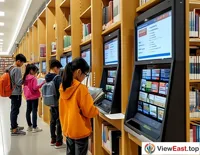







Education in China is not only the cornerstone of national development but also the engine of social progress. With the rapid advancement of technology, the field of education in China is undergoing an unprecedented technological revolution. From remote education to artificial intelligence-assisted teaching, from virtual reality to personalized learning platforms, China has achieved a series of remarkable accomplishments in educational technology innovation. These achievements have not only changed traditional teaching models but also provided valuable experience for global educational innovation.
Since the beginning of the 21st century, the Chinese government has been vigorously promoting the construction of educational informatization. In 2010, China issued the "National Outline for Medium and Long-Term Education Reform and Development (2010-2020)," which clearly proposed to accelerate the process of educational informatization and use information technology to improve the quality and efficiency of education. The implementation of this policy has laid a solid foundation for the innovation and development of educational technology in China.
Against this backdrop, Chinese educational technology companies have emerged like mushrooms after rain, bringing revolutionary changes to the field of education through continuous technological innovation. For example, Chinese online education platforms provide a wealth of course resources, allowing students to learn anytime and anywhere, breaking the limitations of time and space. In addition, through big data analysis, these platforms can provide personalized learning suggestions based on students' learning habits and abilities, greatly improving learning efficiency.
The application of artificial intelligence technology has pushed Chinese educational technology to a new height. Intelligent education robots can not only assist teachers in teaching but also interact with students through natural language processing technology to answer their questions. This intelligent teaching method not only reduces the workload of teachers but also increases students' interest and participation in learning.
The application of virtual reality (VR) and augmented reality (AR) technology has brought a more intuitive and vivid learning experience to Chinese educational technology. Through VR and AR technology, students can be immersed in a virtual environment for immersive learning. This technology is particularly effective in the teaching of subjects such as history and geography, making abstract concepts concrete and helping students better understand and remember knowledge.
China's educational technology innovation is also reflected in the pursuit of educational equity. Through remote education technology, children in remote areas can also enjoy high-quality educational resources. The popularization of this technology has greatly narrowed the urban-rural education gap, giving every child an equal opportunity to receive education.
In terms of educational management, China is also continuously exploring and innovating. The construction of smart campuses has made campus management more intelligent and efficient. Through the Internet of Things technology, various facilities on campus can be remotely monitored and managed, improving campus safety and convenience.